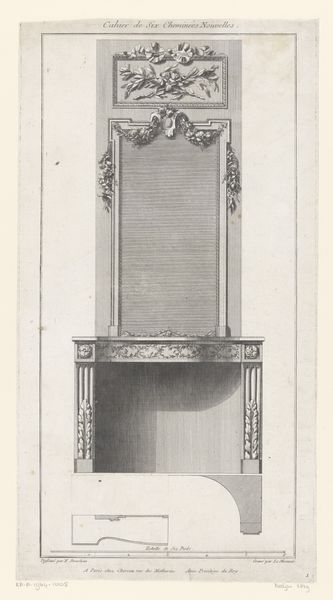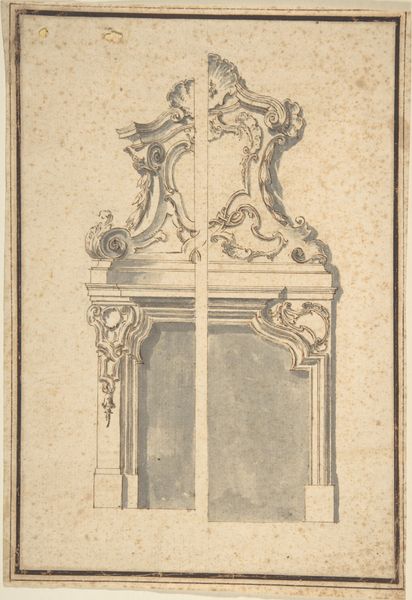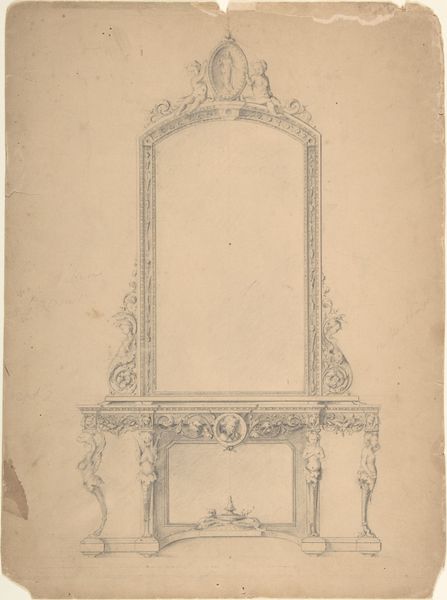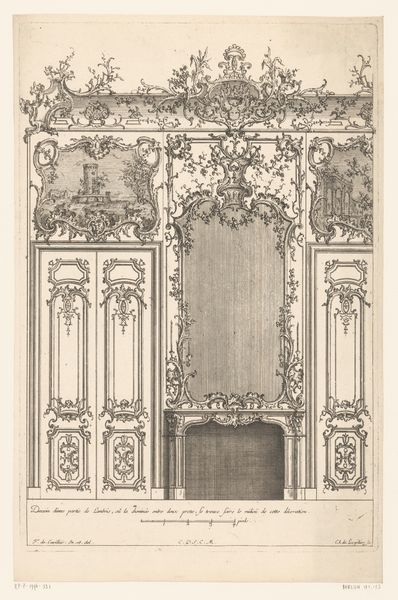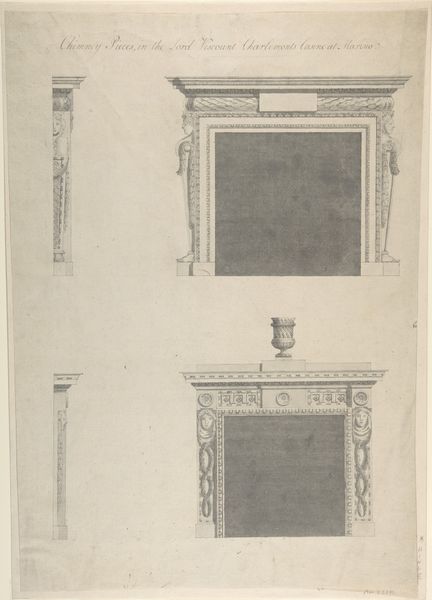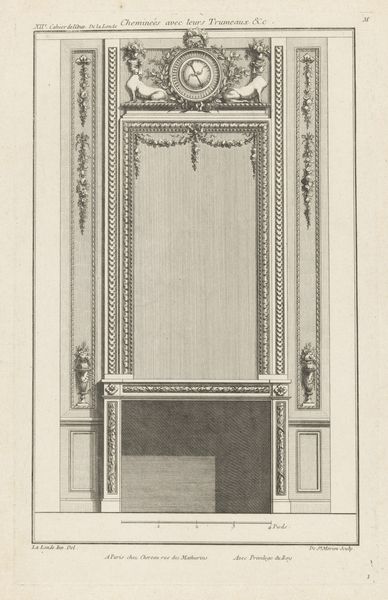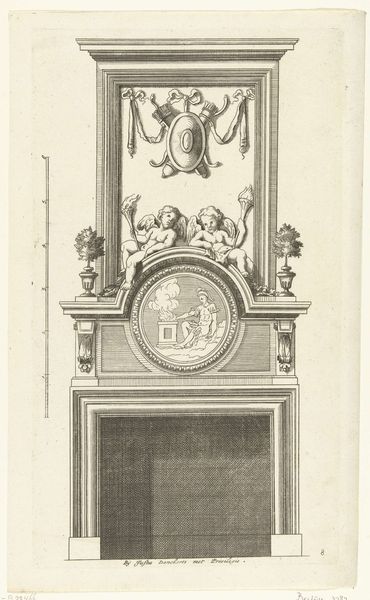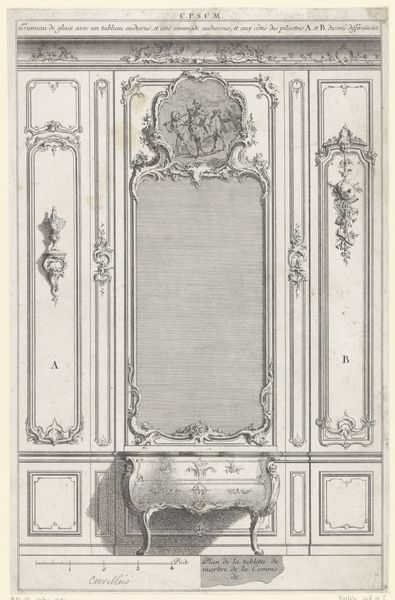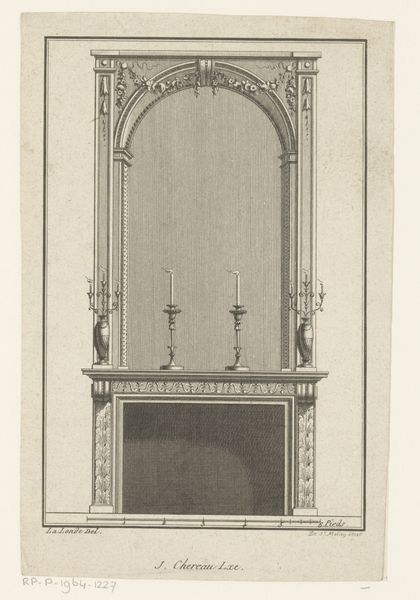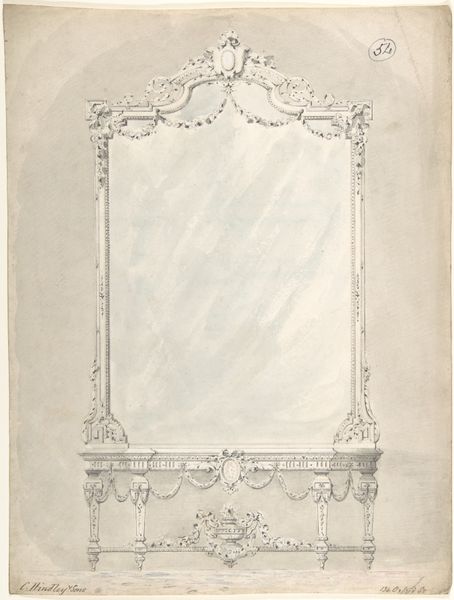
drawing, print, paper, pencil
#
drawing
#
neoclacissism
# print
#
classical-realism
#
paper
#
form
#
geometric
#
classicism
#
pencil
#
line
#
decorative-art
Copyright: Public Domain
Editor: Here we have an intriguing "Chimneypiece Design with Mirror," created sometime between 1800 and 1900, and currently residing at the Metropolitan Museum of Art. It’s rendered with delicate pencil lines on paper, and has the calm serenity of the Neoclassical style, but also the decorative qualities of a building elevation, almost as if someone were designing the interior decor. How do you interpret this, looking at this almost weightless construction? Curator: Ah, yes! The floating quality intrigues me as well. It feels like a dream, a vision of what could be, rather than what is. Notice how the classical motifs – the faces, the geometric ornamentation, the symmetrical structure – are all rendered with such precision, yet the overall effect is ethereally light, like breath on a cold pane of glass. It almost suggests a yearning for an ideal age, doesn't it? Editor: Definitely, I think it's about longing. Curator: Indeed! And consider this was created at a time when the world was rapidly changing. Industrialization was taking hold, disrupting established social orders. Perhaps this design represents a desire to return to a simpler, more harmonious past, a world where beauty and order reigned supreme. Do you think the artist achieved that sense of beauty and order, despite the slight ghostliness of the execution? Editor: I think the classical architecture does offer that sense of harmony, a perfect geometric world away from everyday problems. Curator: Precisely! It’s a sanctuary. What starts as just lines becomes, by the end, a grand construction ready for living. I guess even art that isn't physical can be inhabitable, like thoughts can fill our heads like an inner mansion. Editor: That’s beautiful, it brings the picture to life in my mind in a different way.
Comments
No comments
Be the first to comment and join the conversation on the ultimate creative platform.

